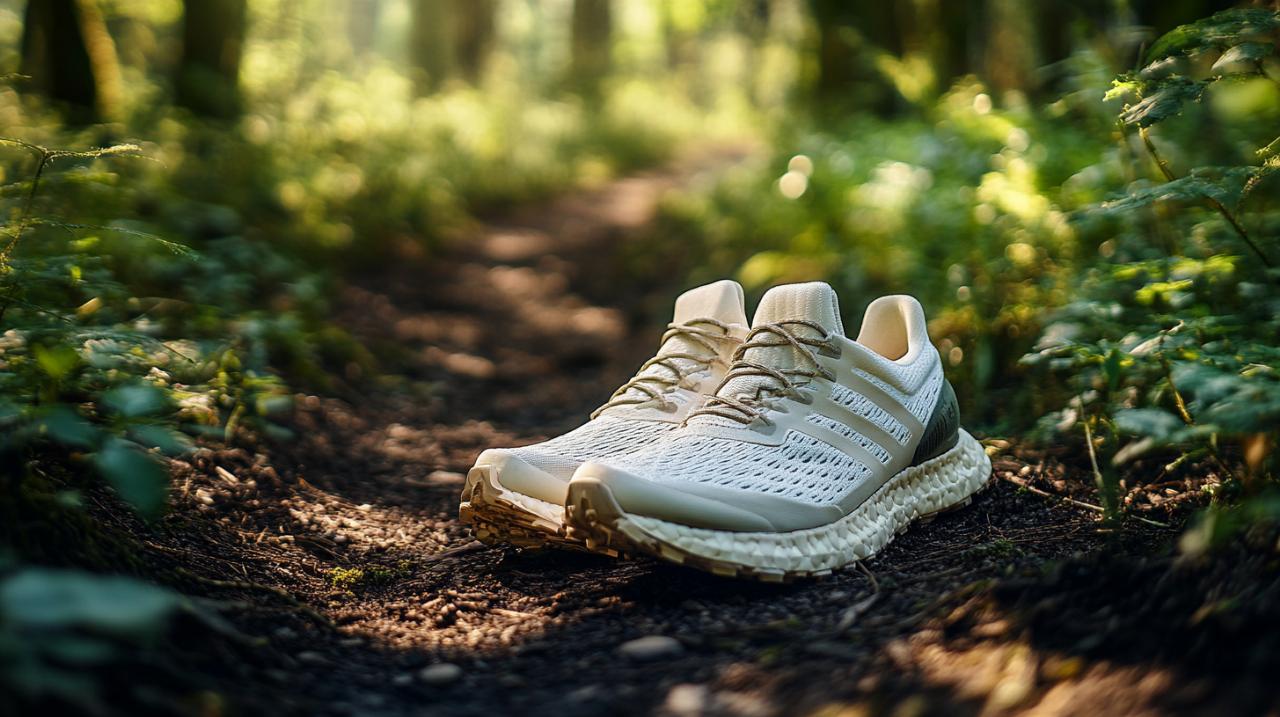Selecting the proper trainers for supination can make all the difference in your running experience, transforming discomfort into fluid, confident strides. Supination, often misunderstood, requires thoughtful consideration when it comes to footwear, and understanding the nuances of your gait will help you make the most informed choice. This comprehensive guide explores the essential factors to keep in mind, from cushioning and flexibility to professional fitting, ensuring that every runner who rolls onto the outer edges of their feet finds the perfect match for their needs.
Understanding Supination and Its Impact on Running
What is supination and how does it affect your gait?
Supination occurs when your weight shifts towards the outer edges of your feet during the running cycle, a pattern that can significantly alter the way your body absorbs shock and maintains balance. Unlike overpronation, where the foot rolls inward excessively, supination sees the foot rolling outward, which can lead to increased stress on the ankles, knees, and hips. This gait pattern is not inherently problematic, but it does mean that the natural cushioning and shock absorption mechanisms of your body are working differently. Runners with this biomechanical trait often experience heightened impact forces on the lateral side of the foot, which can lead to discomfort or injury if not properly addressed through appropriate footwear. Recognising how your foot moves during each stride is the first step towards choosing trainers that support your unique running mechanics.
Why supinators need specialised footwear
Those who supinate require trainers that accommodate rather than correct their natural gait, a principle that distinguishes their needs from those of overpronators. Stability shoes, which are designed with medial posts and guide rails to prevent excessive inward rolling, are not suitable for supinators because they can interfere with the foot’s natural movement and potentially cause additional strain. Instead, supinators benefit from shoes that offer ample cushioning and flexibility, allowing the foot to move freely while absorbing the impact forces that occur during each foot strike. Understanding this distinction is crucial, as choosing the wrong type of shoe can exacerbate discomfort and lead to long-term issues. The goal is to find footwear that enhances your natural biomechanics rather than attempting to alter them, ensuring that every run feels smooth and supported.
The Importance of Neutral Running Shoes for Supinators
What makes neutral running shoes different?
Neutral running shoes are designed without the corrective structures found in stability or motion control models, making them the ideal choice for runners whose feet do not roll excessively inward or outward. These trainers prioritise cushioning and comfort, providing a balanced platform that supports the foot without imposing rigid control over its movement. Unlike stability shoes, which feature medial posts and heel counters to limit pronation, neutral shoes allow the foot to move naturally, which is precisely what supinators need. This design philosophy recognises that not every runner requires intervention in their gait, and for those who supinate, a neutral shoe offers the freedom and flexibility necessary for optimal performance. By choosing neutral trainers, supinators can ensure that their footwear complements their natural stride rather than constraining it.
How neutral shoes support natural foot movement
The beauty of neutral running shoes lies in their ability to support the foot’s natural biomechanics while delivering the cushioning and responsiveness that runners crave. These trainers are engineered to provide shock absorption across the entire sole, distributing impact forces evenly and reducing the stress placed on joints and connective tissues. For supinators, this even distribution is particularly important, as the outward rolling motion can concentrate impact on the outer edges of the foot and ankle. Neutral shoes also tend to feature flexible midsoles that adapt to the runner’s stride, encouraging a smooth transition from heel strike to toe-off. This flexibility is essential for maintaining a fluid, efficient running form, and it allows supinators to move with confidence and comfort. By prioritising natural movement, neutral trainers help reduce the risk of injury and enhance overall running enjoyment.
Cushioning: the essential feature for supination
Why Impact Absorption Matters for Heel and Forefoot
Impact absorption is the cornerstone of effective running shoes for supinators, as the outward rolling motion can intensify the forces experienced by the heel and forefoot during each stride. When the foot supinates, the shock from landing is concentrated on the outer edges, which can lead to increased stress on the bones, muscles, and ligaments in these areas. High-quality cushioning materials, such as responsive foams and gel inserts, work to dissipate these forces, protecting the runner from the repetitive impacts that can accumulate over long distances. Without adequate cushioning, supinators may experience discomfort, soreness, or even injury, particularly in the ankles and knees. This is why choosing trainers with robust cushioning in both the heel and forefoot is so critical, as it ensures that every foot strike is met with the support and protection needed to maintain a healthy, pain-free running routine.
Finding the Right Level of Cushioning for Your Needs
Not all cushioning is created equal, and finding the right level for your individual needs involves considering factors such as your running distance, surface preference, and personal comfort. Runners who clock up high mileage or frequently run on hard surfaces like roads and pavements will benefit from trainers with maximum cushioning, as these provide the most protection against impact forces. On the other hand, those who prefer shorter, faster runs or who run on softer terrain such as trails may opt for a moderate level of cushioning that offers a balance between protection and ground feel. It is also worth noting that cushioning materials degrade over time, typically after several hundred miles of use, so regular replacement of trainers is essential to maintain optimal support. By paying attention to how your shoes feel during and after runs, you can determine whether you need more or less cushioning, ensuring that your footwear continues to meet your evolving needs.
Flexibility and Natural Movement in Running Shoes

How shoe flexibility supports your running stride
Flexibility in a running shoe is a key factor that enables the foot to move naturally through its full range of motion, from the initial heel strike to the final push-off at the toes. For supinators, this flexibility is particularly important because it allows the foot to roll outward without restriction, maintaining the fluidity and efficiency of the running gait. A shoe that is too rigid can impede this natural movement, forcing the foot into unnatural positions and increasing the risk of strain or injury. Flexible midsoles and forefoot areas ensure that the shoe bends and flexes in harmony with the foot, supporting a smooth transition through each phase of the stride. This adaptability not only enhances comfort but also contributes to better performance, as runners can maintain their natural biomechanics without interference from their footwear.
Testing flexibility before you purchase
Before committing to a new pair of trainers, it is wise to test their flexibility to ensure they will support your running stride effectively. A simple method is to hold the shoe at both ends and attempt to bend it in the middle, observing how easily the midsole flexes. A shoe that bends smoothly at the ball of the foot, where the toes naturally flex during push-off, is likely to provide the flexibility needed for a natural running gait. Conversely, a shoe that feels stiff or resists bending may hinder your stride and lead to discomfort. Additionally, it is helpful to try on the shoes and move around the shop, paying attention to how the trainers respond to your foot’s movements. This hands-on approach allows you to assess not only flexibility but also overall comfort and fit, helping you make a more informed decision. Taking the time to test these features before purchasing can save you from the disappointment of trainers that do not meet your needs.
Getting the Perfect Fit: Professional Fitting and Timing
Why professional foot measurement is worth your time
Having your feet measured professionally is an investment that can significantly improve your running experience, as it ensures that your trainers fit correctly and provide the support your feet need. Many running shops offer gait analysis services, where trained staff observe your running style and assess your pronation pattern, providing personalised recommendations based on your individual biomechanics. This expert guidance can be invaluable, particularly for supinators who may be unfamiliar with the specific features they should look for in a shoe. Professional fitting also takes into account factors such as foot width, arch height, and any specific pressure points or discomfort you may experience, allowing for a tailored approach to shoe selection. By taking advantage of these services, you can avoid the trial and error that often accompanies buying trainers online or without expert input, ultimately saving time and ensuring that you find the perfect match for your running needs. If you are exploring various options and resources, you might find it useful to visit compralab.es for additional insights and product comparisons that can further inform your decision-making process.
The Best Time of Day to Try On Running Shoes
Timing matters when it comes to trying on running shoes, as your feet naturally swell throughout the day due to activity and increased blood flow. Shopping for trainers in the afternoon or evening ensures that you are fitting them when your feet are at their largest, which helps prevent the discomfort that can occur if you purchase shoes that are too tight. This is particularly important for runners who cover long distances or spend extended periods on their feet, as even a small amount of swelling can make a significant difference in how a shoe fits. Trying on trainers later in the day also allows you to simulate the conditions your feet will experience during most runs, providing a more accurate sense of how the shoes will perform. Additionally, wearing the type of socks you typically use for running when trying on shoes can further enhance the accuracy of the fit, ensuring that you leave the shop with trainers that will feel comfortable and supportive every time you lace up.
Finding your ideal running shoe through trial and testing
Why Different Brands and Models Work for Different Feet
The diversity of running shoe brands and models reflects the wide range of foot shapes, sizes, and biomechanical needs among runners, making it essential to explore multiple options before settling on the right pair. Each brand has its own unique approach to design, cushioning technology, and fit, which means that a shoe that works perfectly for one runner may not be ideal for another. For supinators, this variety is particularly beneficial, as it allows you to find a trainer that not only provides the necessary cushioning and flexibility but also accommodates the specific shape and dimensions of your feet. Trying on different brands and models in a shop setting, where you can compare them side by side, is the best way to discover which trainers feel most comfortable and supportive. It is also worth noting that different models within the same brand can vary significantly in terms of fit and feel, so keeping an open mind and being willing to experiment can lead to the discovery of a shoe that truly enhances your running experience.
Prioritising performance over appearance when choosing trainers
While the aesthetic appeal of running shoes can be tempting, it is crucial to prioritise performance and comfort over looks when making your final decision. A stylish pair of trainers that does not provide adequate cushioning, flexibility, or fit will ultimately detract from your running enjoyment and may even lead to injury. Instead, focus on how the shoes feel during a test run or walk around the shop, paying attention to any pressure points, rubbing, or discomfort. It can also be helpful to read reviews and seek recommendations from fellow runners or running communities, as these insights can provide valuable information about how a particular model performs over time. Remember that running shoes are tools designed to support your body and enhance your performance, so functionality should always take precedence over fashion. By keeping this principle in mind, you can ensure that your chosen trainers will serve you well over many miles, providing the support, comfort, and confidence you need to achieve your running goals.





